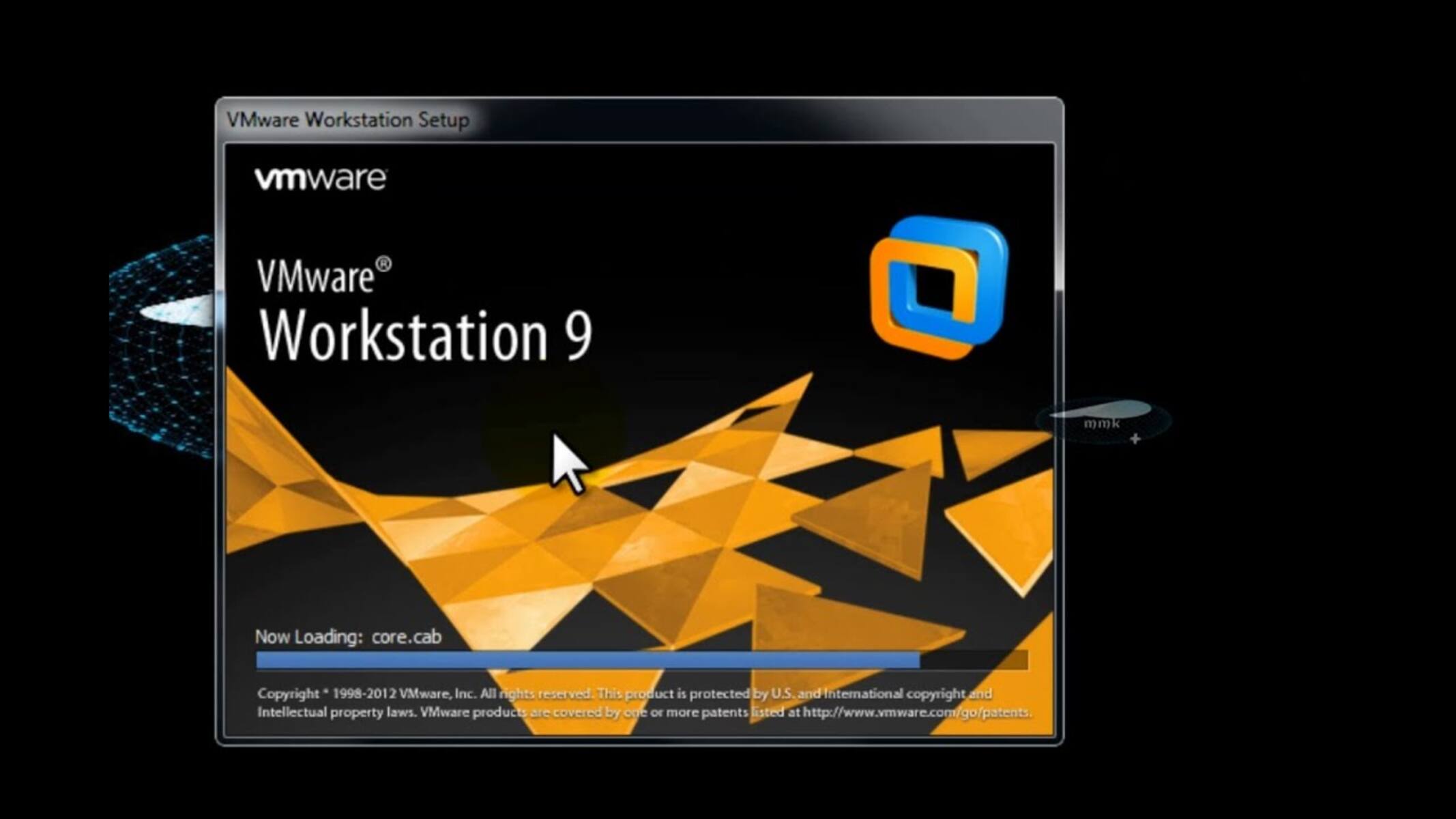Introduction
When it comes to virtualization software, both ESX and VMware Workstation are popular choices. They offer powerful tools for creating virtual environments and running multiple operating systems on a single machine. However, there is one key benefit that sets ESX apart from VMware Workstation: its superior performance and scalability.
ESX, short for ESXi, is a bare-metal hypervisor that is installed directly on the hardware of the host machine. On the other hand, VMware Workstation is a type 2 hypervisor that runs on top of an existing operating system. This fundamental architectural difference gives ESX a performance advantage, making it the preferred choice in many enterprise-level environments.
With ESX, you will experience faster and more efficient virtualization. It allows for direct access to the host’s resources, such as CPU, memory, and storage, without the overhead of an underlying operating system. This results in improved speed and reduced latency, especially when running resource-intensive applications and workloads.
Furthermore, ESX offers better scalability compared to VMware Workstation. ESX is designed to handle large-scale virtualization deployments, allowing you to easily manage and allocate resources across multiple virtual machines (VMs) and physical hosts. The ability to scale up or down your virtual infrastructure based on your needs is crucial for businesses that experience fluctuating workloads or need to accommodate rapid growth.
ESX also provides advanced features that are essential for enterprise-level virtualization. It offers robust security measures, such as isolation between different VMs and support for secure boot. Additionally, ESX supports advanced networking features, including VLAN tagging, virtual switches, and software-defined networking. These features are crucial for creating complex virtual networks and ensuring efficient communication between VMs.
Another advantage of ESX over VMware Workstation is its support for high availability and fault tolerance. ESX allows you to set up clusters of physical hosts to ensure that your VMs remain accessible even in the event of a hardware failure. This level of redundancy is crucial for mission-critical applications and helps minimize downtime.
While VMware Workstation is a powerful virtualization tool for individual users or small-scale environments, ESX shines in enterprise-level settings. Its performance, scalability, and advanced features make it the go-to choice for organizations that require a robust and reliable virtualization platform.
Ease of Use
When it comes to virtualization software, one crucial factor to consider is the ease of use. Both ESX and VMware Workstation offer user-friendly interfaces and intuitive workflows, but there are a few key differences that set them apart.
VMware Workstation is designed with simplicity in mind. It provides a user-friendly graphical interface that allows you to easily create, configure, and manage virtual machines. The intuitive drag-and-drop feature allows for effortless file sharing between the host and the guest operating systems, making it convenient for testing applications or running multiple operating systems simultaneously.
ESX, on the other hand, has a more robust and complex interface. As an enterprise-level virtualization platform, it offers a wide range of advanced features and granular controls. While this can be overwhelming for beginners, it provides system administrators with the flexibility they need to manage large-scale deployments efficiently.
Despite its complexity, ESX offers comprehensive documentation and a strong support community, making it easier for users to access resources and find solutions to any challenges they encounter. VMware Workstation also provides ample documentation and support forums, but its simplicity means that users are less likely to encounter issues that require extensive troubleshooting.
Another aspect to consider is the installation process. VMware Workstation can be quickly installed on a desktop or laptop without requiring any additional hardware or configuration changes. This makes it an ideal choice for individual users or small-scale environments. In contrast, ESX requires specific server hardware and may involve more setup steps. However, thanks to its powerful performance and scalability, the additional effort is well worth it for organizations seeking a high-performance virtualization solution.
In terms of virtual machine management, both ESX and VMware Workstation provide similar functionality. You can easily create, clone, and customize virtual machines, allocate resources, and manage virtual networks. Both also offer snapshot functionality for capturing the state of a virtual machine at a specific point in time, allowing for easy rollback or testing.
Overall, while VMware Workstation excels in its simplicity and ease of use, ESX offers greater flexibility and control for advanced users. The choice between the two ultimately depends on the specific needs of your virtualization environment and the level of complexity you are comfortable with.
Performance
When it comes to virtualization software, performance is a crucial factor to consider. ESX and VMware Workstation offer different levels of performance, with ESX taking the lead in terms of speed, efficiency, and resource utilization.
ESX, as a bare-metal hypervisor, directly interacts with the host hardware, eliminating the need for an underlying operating system. This architectural difference allows ESX to make more efficient use of system resources, resulting in improved performance compared to VMware Workstation. With ESX, you will experience faster boot times, quicker virtual machine creation, and overall smoother operation.
ESX also benefits from enhanced CPU management. By bypassing the host operating system, ESX has greater control over resource allocation and scheduling, optimizing CPU utilization. This leads to better performance for resource-intensive applications and workloads, such as database servers or scientific simulations.
In addition, ESX employs advanced memory management techniques, such as transparent page sharing and memory ballooning. These features optimize memory allocation and minimize wastage, ensuring efficient utilization of the available physical memory. As a result, ESX can support more virtual machines with fewer resources, maximizing performance without sacrificing stability.
Another performance advantage of ESX is its ability to leverage hardware-assisted virtualization technologies, such as Intel VT-x and AMD-V. These technologies provide direct hardware support for virtualization, allowing for faster and more efficient execution of virtual machines. VMware Workstation also supports hardware-assisted virtualization, but ESX is designed to take full advantage of these technologies at scale.
Furthermore, ESX offers enhanced network performance through features like paravirtualized network drivers and support for hardware offloading. These features reduce networking overhead and improve data transfer rates, especially in environments with high network traffic or demanding applications.
While VMware Workstation provides satisfactory performance for individual users or small-scale environments, ESX shines in enterprise-level settings where performance is critical. Its optimized resource utilization, superior CPU and memory management, and support for hardware-assisted virtualization contribute to a highly efficient and high-performing virtualization environment.
Scalability
Scalability is a vital consideration when selecting virtualization software, as it determines the ability to expand and manage virtual environments as needs evolve. ESX offers significant advantages over VMware Workstation in terms of scalability, making it an ideal choice for organizations with growing virtualization requirements.
ESX is built for scalability from the ground up. It is designed to handle large-scale deployments with hundreds or even thousands of virtual machines (VMs) spread across multiple physical hosts. With ESX, you can easily create clusters of hosts and distribute VMs among them, allowing for efficient resource allocation and load balancing.
One of the key scalability features of ESX is the ability to dynamically add or remove hosts from a cluster without impacting the availability of VMs. This flexibility is crucial for businesses that experience fluctuating workloads or need to accommodate rapid growth. It ensures that you can scale your virtual infrastructure up or down based on your needs, without disruption to running applications.
In addition, ESX offers powerful resource management capabilities that enable efficient utilization of available hardware resources. With features like Distributed Resource Scheduler (DRS) and Distributed Power Management (DPM), you can automatically optimize the allocation of CPU, memory, and storage across hosts within a cluster. This ensures that resources are utilized effectively, preventing bottlenecks and maximizing the performance of your virtual environment.
ESX also supports the utilization of shared storage, such as iSCSI or Fibre Channel, allowing multiple hosts to access the same storage resources. This enables features like vMotion, which allows for live migration of VMs between hosts without causing downtime. The ability to seamlessly move VMs across physical hosts is essential for load balancing, maintenance, and business continuity.
Furthermore, ESX integrates with management and orchestration tools like VMware vCenter, providing centralized control and visibility across the entire virtual infrastructure. This allows you to manage hundreds or thousands of VMs and hosts through a single interface, saving time and simplifying administrative tasks.
While VMware Workstation offers scalability to some extent, its primary focus is on individual users or small-scale environments. It lacks the advanced features and robust scalability capabilities of ESX, making it less suitable for businesses that require the ability to scale their virtual infrastructure seamlessly.
Overall, if scalability is a critical requirement for your virtualization environment, ESX is the superior choice. Its ability to handle large-scale deployments, dynamic resource management, support for shared storage, and integration with management tools make it the preferred option for businesses with growing virtualization needs.
Advanced Features
When it comes to advanced virtualization features, ESX outshines VMware Workstation with a comprehensive set of capabilities designed for enterprise-level environments. These advanced features provide greater flexibility, security, and performance optimization, making ESX the preferred choice for organizations with complex virtualization needs.
ESX offers robust security measures, including isolation between different virtual machines (VMs). Each VM runs in its own isolated environment, enhancing security and preventing potential threats from spreading. ESX also supports secure boot, ensuring that only authenticated and trusted VM images are booted on the host system. These security features are essential for protecting sensitive data and ensuring compliance with industry standards.
One of the standout features of ESX is its advanced networking capabilities. It supports VLAN tagging, which allows for logical separation of network traffic within the virtual environment. By segmenting the network into virtual LANs (VLANs), you can enforce strict network policies and improve network performance. ESX also offers virtual switches and software-defined networking, enabling administrators to create complex virtual networks and easily manage network configurations.
ESX provides the ability to take advantage of hardware acceleration features through support for passthrough devices. This allows VMs to directly access certain hardware components, such as graphics cards or USB devices, resulting in improved performance and compatibility for applications that require direct hardware access.
Another advanced feature of ESX is its support for high availability and fault tolerance. ESX allows you to create clusters of physical hosts, ensuring that VMs remain accessible even in the event of a hardware failure. Sophisticated algorithms monitor the health of hosts and automatically migrate VMs to healthy hosts, minimizing downtime and ensuring business continuity.
ESX also offers advanced storage features like Storage vMotion, which allows for live migration of VMs between different storage systems without disrupting their operation. This feature is valuable for workload balancing and storage maintenance. Additionally, ESX supports thin provisioning, which optimizes storage utilization by dynamically allocating storage space as needed. This ensures efficient use of available storage resources and helps reduce overall storage costs.
Furthermore, ESX integrates with management and automation tools like VMware vCenter, providing centralized control over the virtual infrastructure. This allows administrators to monitor, manage, and automate virtual machine provisioning, deployment, and maintenance tasks. The ability to streamline administrative workflows and efficiently allocate resources is crucial for managing complex virtual environments.
While VMware Workstation offers some advanced features, such as snapshots and virtual networking, ESX provides a more comprehensive and robust set of capabilities for enterprise-level virtualization. Its advanced security measures, networking features, hardware acceleration support, high availability, and storage management functionalities make ESX the go-to choice for organizations that require advanced virtualization capabilities.
Cost
When considering virtualization software, one important factor to take into account is the cost. ESX and VMware Workstation differ in their pricing models, which can influence the decision-making process for businesses of all sizes.
VMware Workstation is available as a commercial product with a one-time upfront cost. The licensing fees are typically lower compared to ESX, making it an attractive option for individual users or small-scale environments with limited budgets. The upfront cost provides lifetime access to the software, allowing you to use it indefinitely without paying any additional fees.
On the other hand, ESX utilizes a different pricing model. It is part of the VMware vSphere suite, which is licensed on a per-processor basis. This means that the cost of ESX is directly tied to the number of physical processors in your host servers. While the licensing fees for ESX can be higher initially, they allow for unlimited virtual machine (VM) deployments, giving you the freedom to scale your virtual infrastructure without incurring additional costs for individual VMs.
ESX also offers optional support and maintenance packages for an additional fee. These packages provide access to technical support, software updates, and upgrades, ensuring that you receive ongoing assistance and benefit from the latest features and security patches. The availability of support and maintenance contracts adds value to ESX, particularly for organizations with complex virtual infrastructures that require reliable and timely support.
It is important to note that the cost considerations extend beyond the upfront licensing fees. You should also take into account the hardware requirements for running ESX, as it requires specific server hardware capable of running the hypervisor and supporting the desired level of performance and scalability.
Additionally, ESX may require additional training or expertise to effectively deploy and manage the virtual infrastructure. This can incur additional expenses for staff training or hiring specialized personnel. VMware Workstation, with its user-friendly interface and simplicity, may require less training and expertise, reducing associated costs.
Ultimately, the choice between ESX and VMware Workstation comes down to your specific requirements and budget constraints. If you are an individual user or a small-scale environment with limited resources, VMware Workstation’s low upfront cost may be the more suitable option. However, for larger organizations or those with a need for advanced features, scalability, and unlimited VM deployments, the long-term value and flexibility of ESX’s licensing model may outweigh the initial higher expenditure.
Conclusion
In conclusion, both ESX and VMware Workstation are powerful virtualization software options with their own sets of advantages. ESX, being a bare-metal hypervisor, offers superior performance and scalability, making it the preferred choice for enterprise-level virtualization environments. Its direct access to host resources, advanced features, and robust security measures make it an ideal solution for businesses that require high-performance virtualization.
On the other hand, VMware Workstation excels in ease of use and simplicity, making it a popular choice for individual users or small-scale environments. It provides a user-friendly interface, drag-and-drop functionality, and quick setup, making it convenient for testing applications or running multiple operating systems simultaneously.
When considering advanced features, ESX outshines VMware Workstation with its comprehensive set of capabilities. ESX offers advanced security measures, sophisticated networking features, hardware acceleration support, high availability, and advanced storage functionalities. These features provide greater flexibility, security, and performance optimization, making ESX the preferred choice for organizations with complex virtualization needs.
In terms of cost, VMware Workstation has a lower upfront licensing fee, making it more accessible for individual users or small-scale environments with limited budgets. ESX, however, follows a per-processor licensing model, which may result in higher initial costs. However, ESX provides unlimited virtual machine deployments and optional support and maintenance packages, offering long-term value and scalability.
In the end, the choice between ESX and VMware Workstation depends on your specific requirements, budget, and the level of complexity you are comfortable with. ESX is the clear winner for businesses that require superior performance, scalability, and advanced features. VMware Workstation, on the other hand, is a solid choice for individual users or small-scale environments looking for ease of use and cost-efficiency.
Whichever option you choose, both ESX and VMware Workstation provide powerful tools for creating and managing virtual environments, allowing you to efficiently run multiple operating systems and streamline your IT infrastructure.

























